History of the MG Car Club: Part 13
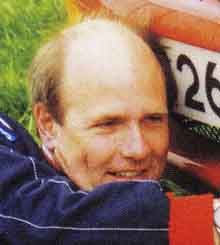
 Although the MGF has provided the single largest boost to Club membership in the period since September 1995, this has not occurred without planning and foresight. Having had a significant input to the formation of the MGF Register, I was fairly sure that the minutes of the council meetings of 1994 would provide the proof of our collective thought processes.
Although the MGF has provided the single largest boost to Club membership in the period since September 1995, this has not occurred without planning and foresight. Having had a significant input to the formation of the MGF Register, I was fairly sure that the minutes of the council meetings of 1994 would provide the proof of our collective thought processes.
Sure enough, in the minutes of the April 1994 council meeting, Don Bishop of the MGB Register proposed that an embryonic register be formed to accommodate the then much talked about PR3 model being developed in what was then Rover Group, which in the previous month had become part of the BMW Group following their purchase of the company from British Aerospace.
I was then an area manager for that company, looking after the commercial relationship between ourselves and the UK Rover dealer network and had already seen and sat in a prototype at the Canley styling and design centre. I was later working at the Rover Group facility, Studley Castle, where the Club was housed in the late 1980s. It was a short walk to the Portakabin where it was managed, I was therefore in a unique position, knowing the truth but unable to say a word about it in the meeting!
Other than agreeing Don’s proposal, nothing more happened until the full council meeting of November 1994, when during “matters arising” there was much talk about how we should progress this opportunity. One idea was that we should ask Rover Group to place a membership application card in the handbook pack of each vehicle leaving the factory. At this point, I could contain myself no longer and decided to offer some advice.
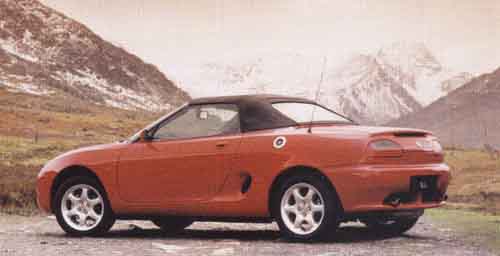
It became apparent to all listening that I knew more than I was prepared to reveal and during the lunch break, Victor Smith engaged me in conversation about a vacancy on the board of directors and the opportunity for Rover to have input at board level through myself. The new car was still unconfirmed in spite of all the preparations and I resolutely refused to confirm it and the motions for debate records the following: “That provision be made, in advance, to ensure that should a new MG car be announced, the MG Car Club is ready to provide a service to purchasers of the new car”.

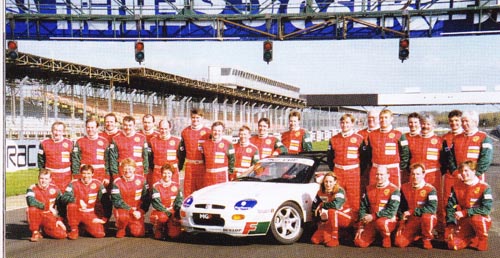
The Club had clearly started to think about what this product would produce in terms of extra membership and was making available a Register even before launch. Perhaps it should also have done this upon the launch of the MGB; what would that have done to membership then, I wonder?
That afternoon at the AGM, I was voted on to the board. My responsibilities became those of the Centres, Registers and Branches of the Club, which gave me the opportunity to steer the initial fortunes of the PR3 Register.
Interestingly, the media and Club members had assumed that it would be called the MGD and it was often referred to as that at board and council meetings until March 7, 1995, when the car was finally revealed at the Geneva Motor Show. Indeed, many entrepreneurs had rung the MG and Rover offices offering to sell us MGD registrations that they had reserved with the DVLA, hoping for a quick profit. It was difficult not to give the game away. Whatever happened to all those number plates?
At the January 1995 board meeting, I revealed that I now worked for a division of the Company called MG Cars, as a regional manager. (Having seen the vacancies available in this division during October 1994, I thought how appropriate it would be, both as an enthusiast and as a board member to work in this part of the company.)
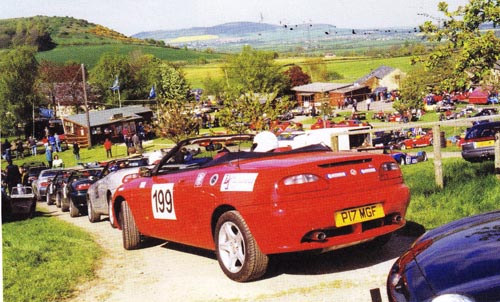
I was given permission to reveal the outline product details but not the name. I asked for secrecy to be observed and the minutes of the meeting do not record any details of this presentation. Subsequently, plans were laid to celebrate the new sports car’s arrival by an MG Car Club run to Geneva, to coincide with the launch, in cars representing the history of the marque. This was organised by the then Overseas Director, Alan Kingwell, who also provided support to the run with Bob Marshall, in a Land Rover provided by Rover Group This event was also filmed by the BBC for the subsequent series “When Rover met BMW” although it was edited out of the final programmes to make way for the more interesting story of John Towers’ imminent departure as Rover chief following disagreements with the BMW board. All rather poetic when you consider six years further on, John Towers as the head of the Phoenix Consortium, buys back Rover from BMW for the princely sum £10, announcing this staggering situation to the world’s Press on May 9, 2000.
The initial meeting of the MGF Register was held immediately after the Council meeting at the Upper Reaches Hotel in Abingdon in April 1996, and it was attended by four people: Dr Rob Higgins, myself, already an owner with a company-provided MGF, Dawn-Marie Turner (subsequently to become my wife) and Nick Cox, who was about to order his car. It had been decided to leave the fortunes of the PR3 Register in the hands of Don Bishop until deliveries of the vehicles had started. Don had issued the first 20 or so membership cards by the time he came to hand the reins to the first chairman of the group, Julia Marshall (also a board director at that time). She was able to take delivery of her car a few days after the launch from the showrooms of Clive Sutton in Old Brompton Road, Kensington. She was to receive a splash of publicity in the Daily Telegraph, following their headlines a week or so earlier asserting that the average customer was male and in his middle fifties. Here was a twenty-something blonde female disproving that theory, and getting a half-page of full colour coverage in the process; not for nothing, she was the director responsible for the Club’s publicity.
This was an excellent start for the Register since Julia had mercilessly promoted the MG Car Club in the article and its support of the product through her involvement in MGF activities. Coupled with this was the support of the MG Cars department at Longbridge who had instituted an advisory “best practice” policy for its dealers to offer membership of the Club with the delivery of each car as an added-value item for the customer. Memberships mounted up quickly even after an objection by the MG Owners Club who felt extremely put out by this exclusive arrangement. Through the journalist Kevin Eason, then the motoring correspondent of The Times, Roche Bentley (General Secretary of the MGOC) had given this issue much publicity in the issue of October 7, 1995. This increased the number of enquiries we received. At the same time, I was turned into the villain of the piece as the perpetrator. Roche, never one to miss an opportunity, had managed to steer Kevin Eason’s article into a wonderful advertisement for the MGOC’s insurance scheme with typical premiums quoted and a telephone number to ring for further information. Both clubs had come out of the story with benefits to their respective organisations, proving yet again that there is no such thing as bad publicity!
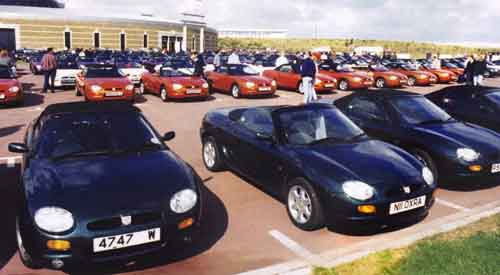
The early days of the Register were taken up with trying to find out more about what the new owners wanted out of our Club. The committee had grown to include MG dealer John Priest of Chesham, and two more owners, Graeme Bishko and, thankfully, another blonde female, Caroline Woodley. The Daily Telegraph must have been on the run by now as not one of the team met their specification!
At the Club’s annual festival at Silverstone in 1996, Julia had decided to find out more about our growing membership, by now running at around 400, and produced a brief questionnaire to help guide us forward. In spite of a knee injury and being on crutches, she hobbled around the parking area making sure that we found out what we needed to know. It became quite clear that F members were outgoing and sociable and wanted to use their cars for pleasure, which is driving around as part of an event, or to get to an event. Many had already ‘met’ via the Internet with a bulletin board being the meeting place and this was the major feature of the research: nearly all of those we spoke to were email friendly and were regularly trawling the ‘net. This feature also governed the future shape of the committee who, were all ‘net jockeys’. Remember that this was the early days of the Internet.
The Register continued to grow. The availability of less expensive used cars has widened the pool of potential members, as did the introduction of a lower-priced entry model with 1600cc engine. Since launch and up to the end of 2000, well over 33,000 had been sold in the UK, with a further 30,000 abroad. No other sports car had sold in these numbers in the home market up to September 23, 1995 when MG returned to selling sports cars. By the end of production of MGF, over 77,000 had been produced and it was superseded by a conventionally suspended MG TF a model which was put back into production by NAC for a limited period, producing less than 1,000 before SAIC turned off the tap.
Following the dark days of 1980, when the Abingdon factory closed, we could have become just another old car club. However; the arrival of the Metro, Maestro and Montego in the middle ’80s, and the RV8 in the early 90s, had given the Club a much-needed boost in membership. The MGF and TF have increased the activity in the social scene behind the sporting side of Register activities and have, in the period since the original launch, added around 3,500 people to our Club.
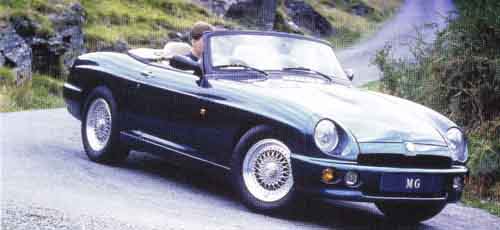
Year 2001 and beyond, has provided us with a startling range of new products from the Longbridge factory to admire, from the appropriately renamed MG Rover Group. This was another opportunity to encourage new members to our ranks in the same way that the MGF had done. SAIC continued to produce new models, using the Longbridge facilities to assemble MGs up until recently.
My tenure of the Chairmanship of the MGCC finished in 2005, having been appointed five years earlier, and I had been looking for gainful employment since the April of that year following the collapse of MG Rover Group.

Stephen Cox was a long-standing member of the Club. Having been the scribe for the Midland Centre, he became Treasurer of the MGA Twin Cam Group following the acquisition of a Coupe model and in that position he attended council meetings with Nick Cox. After a period as Club director he became chairman from 2000-2005. He competed with an MGF in the Abingdon Trophy and progressed to race in other Club championships. During this time he became involved in the MG Sport and Racing development process, moved on in 2003 to work with Tatra Motors on a joint project to import their utility products to the UK. In 2006 he returned to the world of MG at Longbridge as Sales and Franchising Manager for the Nanjing Automobile Corporation who had purchased all the assets of the failed company. Stephen now lives in France.
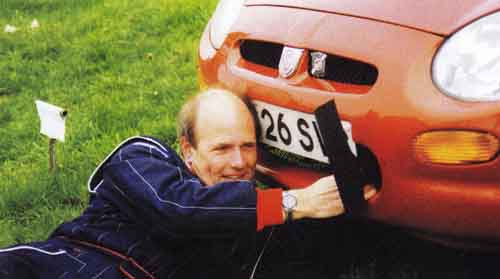
NAMGAR would like to thank Andy Knott, Editor, Safety Fast! for his kind permission to reproduce these articles.

